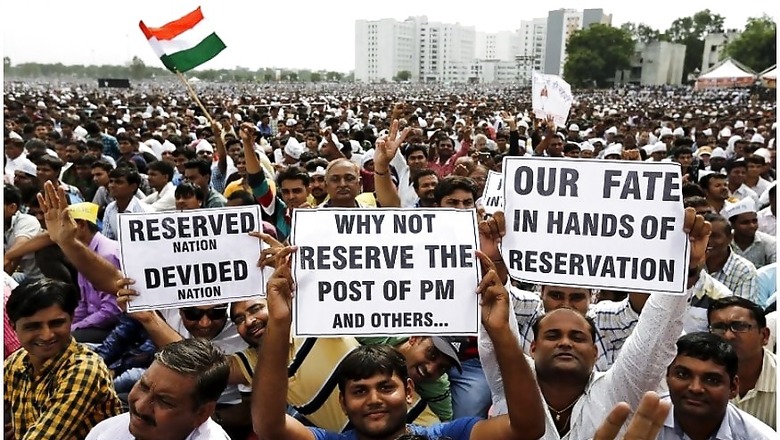
views
New Delhi: With the Supreme Court clearing the decks for reservation in promotion to Scheduled Caste (SC)/Scheduled Tribe (ST) employees, the ball is now in the court of the government that has to implement the policy.
The only guideline the apex court order highlighted was that the government must carry out the process “as per law”.
“We can say that you can go ahead with the promotion policy as per the law. If there is law, then you do it as per the law. We do not need to mention the law in our order," the bench had stated while hearing the case on Tuesday.
However, it will not be smooth sailing for the government because of two hurdles — the M Nagraj v Union of India verdict and the Delhi High Court order that led to the quashing of a 1997 office memorandum.
According to the order passed by the Supreme Court, the implementation of the policy must be in “accordance with law”.
The aforementioned law was first laid down in the Indra Sawhney v Union of India verdict when a nine-judge bench disallowed reservation in promotions and seniority.
However, Parliament later enacted three constitutional amendments in 1995, 2000 and 2002, giving the go-ahead for reservations.
It is here that the M Nagraj v Union of India verdict comes into play. In 2006, the Supreme Court upheld constitutional amendments for quota in promotion in government jobs and laid down the requirements for data on the extent of backwardness. This empirical study has proven to be a stumbling block for various state governments in implementing such a reservation structure.
Post the Nagraj verdict, the three criteria that had to be satisfied to implement reservation were to have the state demonstrate backwardness, inadequacy of representation and maintenance of efficiency.
The first-ever reservation policy to fail after the verdict was by the Uttar Pradesh Power Corporation where quota was disallowed for not meeting the criteria laid down by the court.
The question that now arises is what the Supreme Court meant by “in accordance with law”. If the law refers to the Nagraj order, it would merit a detailed deliberation on the three criteria.
The first condition set out in the Nagraj verdict was that the state must demonstrate backwardness of the beneficiaries. This proved to be a hurdle as Article 16 (4A) permitted reservation only for SC/ST and not Other Backward Classes (OBC) as the ‘creamy layer test’ was mandated only for OBCs.
This has already been established in several cases that the SC/ST community passes the test of backwardness and unlike the OBCs, it does not need the creamy layer test.
The next yardstick was to prove the inadequacy of representation.
Article 16 makes it clear that such representation is for the state to determine.
In the UP Power Corporation case, the question was on the nature of the empirical evidence that is required. However, the Supreme Court has been mum on how the states can conduct the empirical analysis.
The third criterion of maintenance of efficiency also remains a grey area. The primary touchstone of which the “loss of efficiency” needs to be gauged has never been explained in any court verdict and is devoid of empirical study.
Unless there is a categorical discussion in the judiciary and the government over “efficiency” in areas of government service, the third parameter is hard to adhere to and prove.
The lawyers who appeared in the recent case before the Supreme Court also say that with the Nagraj verdict in play, it would be difficult for the Centre to follow the court order.
Another impediment could be the shadow of legal defeats faced by state governments through various high courts when such reservation policies were struck down.
In August last year, the Delhi High Court quashed the Centre’s office memorandum dated August 13, 1997, by which it had extended reservation in promotion to SC and ST staff beyond five years stipulated by the Supreme Court in 1992 in the Indra Sawhney case.
A bench of Acting Chief Justice Gita Mittal and Justice C Harishankar quashed the memorandum issued by the department of personnel and training, thereby striking down all promotions made on its basis.
The basis of the decision was that the Centre had to first collect sufficient data highlighting “inadequate representation” and then consider implementing such reservation in promotion.
In the light of the observations, the implementation of the reservation policy is like a sword hanging over the Centre’s head.



















Comments
0 comment